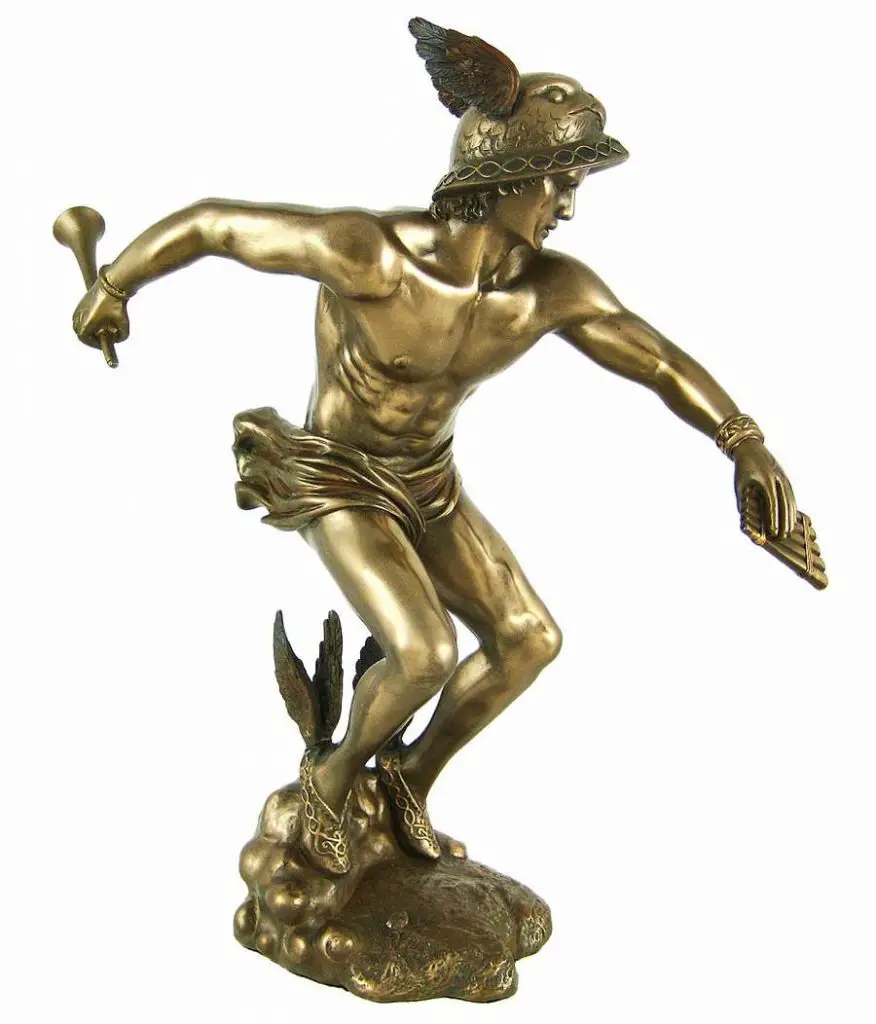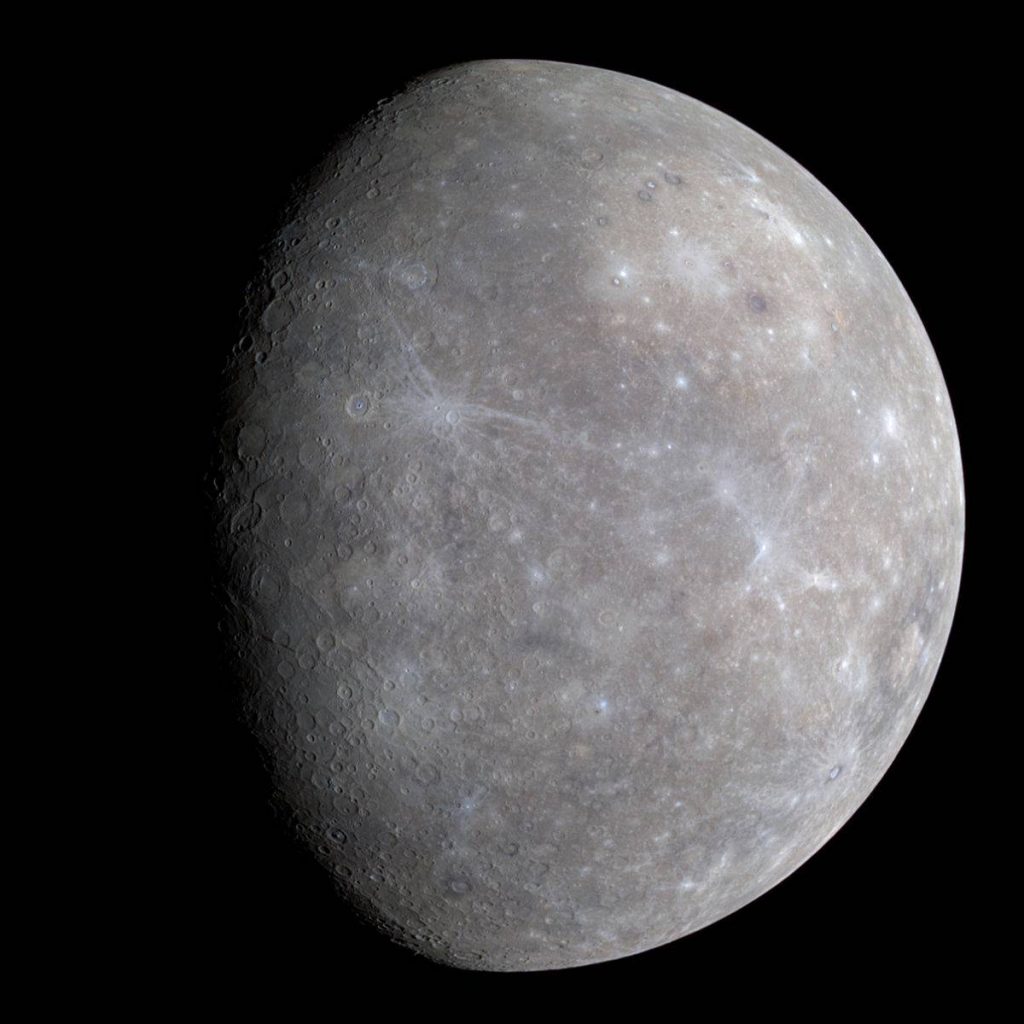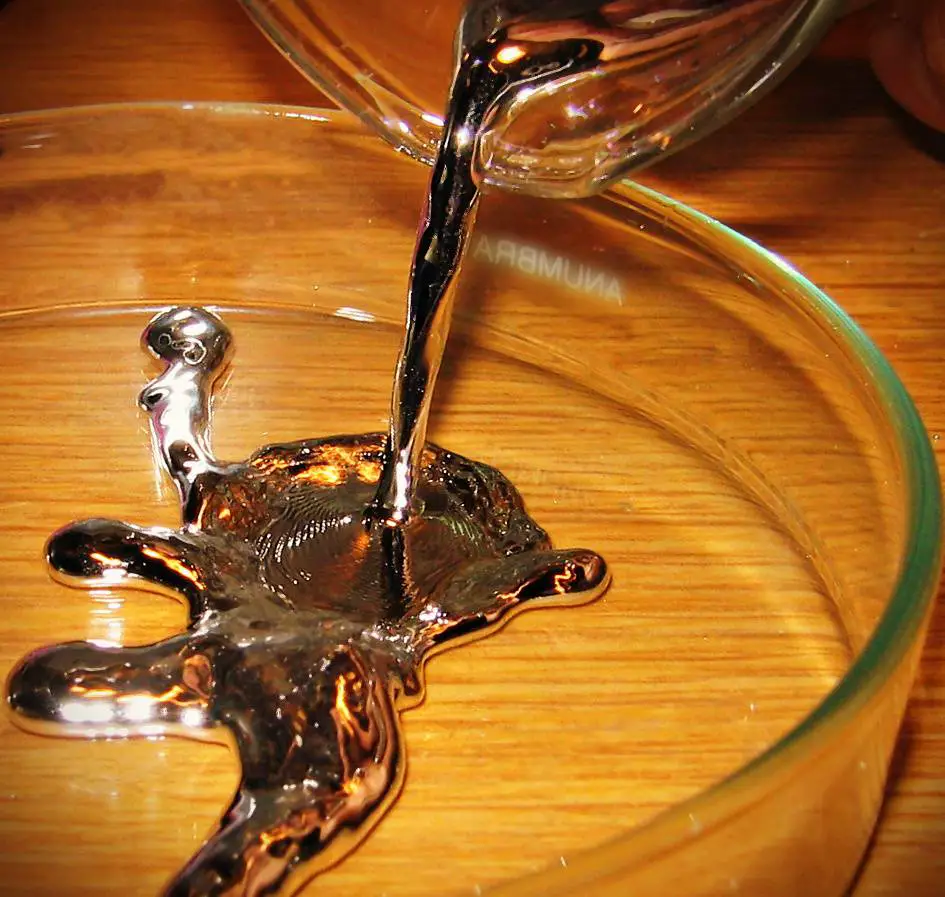Symbol of messages, bridges, fertility, luck, music, life, death, heaven, earth
The word Mercury can call up different images. There is the god Mercury, there is the planet Mercury, and there is the element Mercury, to name a few. Each of these has different symbolic meanings.
The Roman god Mercury was one of the twelve major deities within the Roman pantheon. He is the god of communication, financial gain, eloquence, travellers, messages, boundaries, luck, thieves and trickery. Mercury also serves to guide people to the Underworld. Mercury is usually depicted with a winged hat and winged shoes, carrying a caduceus, a staff with two interwoven serpents. He is usually seen with a goat or ram, which symbolizes fertility, a rooster, which symbolizes the start of a new day, and a turtle, which symbolizes the lyre which Mercury created from a tortoise shell. Because he invented the lyre, people associated Mercury with the arts. Mercury would take messages from the gods to mortals and back. Mercury also protected merchants. Mercury was depicted as a master thief and trickster. Romans carried around coins with pictures of Mercury.

Mercury, the planet, was associated with the deity Mercury. The planet symbolizes the evening star as it is usually seen close to the horizon at twilight. The astrological symbol for the planet Mercury is the caduceus. The symbol for the planet Mercury is Mercury with his winged helmet, represented by a curve above his head, and the caduceus, represented by a straight line. This is both an astrological and astronomical symbol. If Mercury rules you, you are communicative, adaptable, and curious but are also critical, indecisive, and anxious. Mercury affects day-to-day communication.

The element Mercury was named after the god Mercury because of his swiftness. HG is the symbol for the element Mercury, and it comes from the word hydrargyrum, which translates to water-silver. In ancient China, mercury was used to heal fractures, maintain good health, and prolong life. Mercury has been found in temples in Egypt and Mexico. Mercury was also used in cosmetics and ointments in ancient times. Mercury was used in Mayan civilization to make mirrors for divinatory purposes. In the 19th century, Mercury was used for toothaches, depression, childbearing, and constipation. Mercury has been banned from medicinal use in the United States, although it is still used in other countries.

Mercury was considered the First Matter in alchemy. It was thought of as the spirit of any material. Consciousness was considered the spirit of the mind. They commonly used Mercury in transmutations, trying to turn base metals into gold. Mercury and Sulfur are linked and are considered to be two lovers, with Mercury being the feminine aspect and Sulfur being the masculine aspect. Mercury was also called quicksilver as it is the only known liquid metal. Mercury, when combined with nitric acid, creates some solid red crystals and a red gaseous element. This is why Mercury is symbolic of life, death, earth, and heaven.
Symbols Menu:» Amulet
» Ajna
» Arsenic
» Merkaba
» Hung
» Yin Yang
» bindi
» IK Onkar
» Khanda
» Halo
» jiahu
» Tau
» Uraeus
» Menorah
» Quincunx
» Tilaka
» Taijitu
» Vajra
» Chai
» Chi Rho
» Bagua
» Dragon
» Hunab Ku
» Caduceus
» Infinity
» Ichthus
» Hedjet
» Lauburu
» Om
» Ankh
» Chalice
» Pentacle
» Maat
» Ogham
» Mandala
» Kartika
» Khamsa
» Heart
» Labrys
» Sun Face
» Raven
» Triskele
» Scarab
» Dove
» Hanukia
» Anubis
» Trishula
» Durga
» Mezuzah
» Bay Tree
» Geruda
» Kinnara
» Quito
» Condor
» Blue Jay
» Falcon
» Makara
» Rosary
» Uluru
» Apsaras
» Hanuman
» Serpent
» Minotaur
» Mercury
» Apex
» Vestra
» Yoni
» Astarte
» dakini
» Calabash
» Mandrake
» Rebis
» Typhon
» Vegvísir
